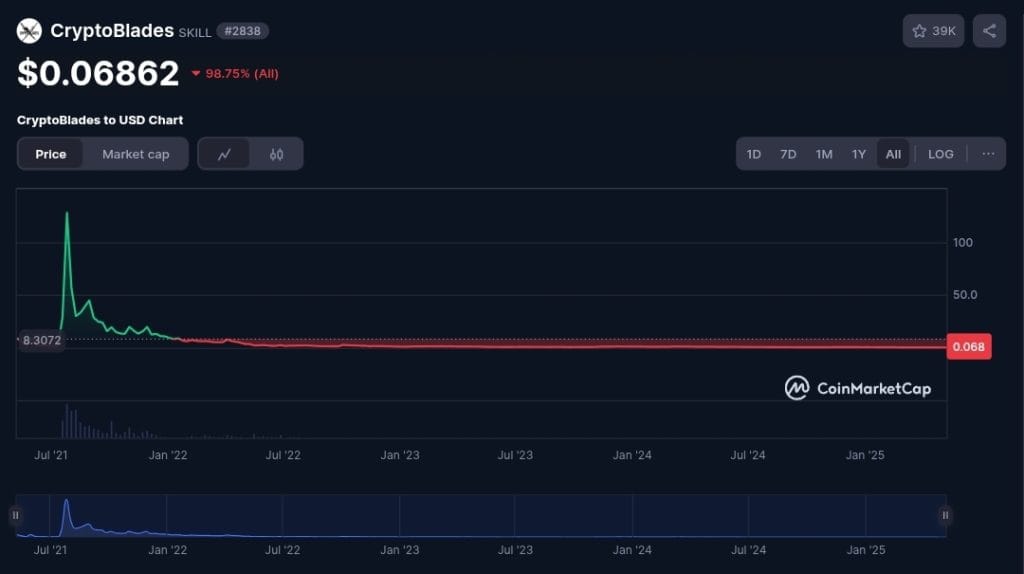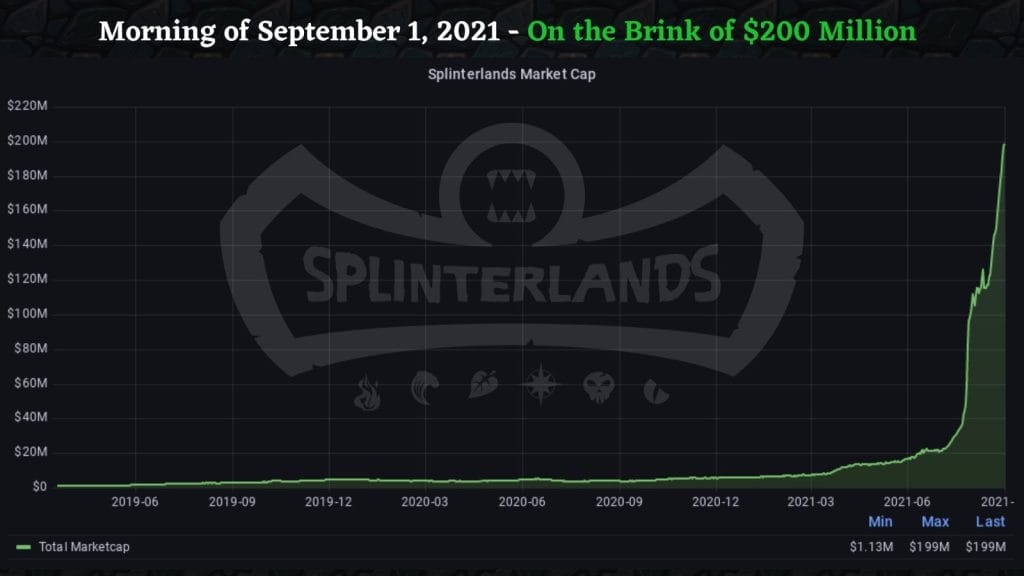Non-fungible token (NFT) games have gained a huge crowd, tempting players with the idea of making money while playing the game. Projects like CryptoBlades and StepN once attracted millions of players with juicy promos and huge profit claims. But it often tanks, leaving players with worthless tokens and dashed hopes. What could be the root cause? Bad tokenomics are the systems that decide how tokens are created, handed out, and used. Figuring out tokenomics is crucial to picking the NFT games that will last long and the ones that will flop. This piece breaks down why some NFT games fail despite all the hype, what makes others stand out, and how players and investors can steer clear of the tokenomics mess.
The Hype and the Crash

NFT games often start with big talk. CryptoBlades, a 2021 combat game, paid players $SKILL tokens for beating opponents, hitting 400,000 unique active wallets at its peak. SKILL soared to $858.99 in July 2021, per CoinMarketCap, but crashed to $0.126 by July 2022; that is a 99.9% drop. What could be the reason? The game churned out tokens without limit, flooding the market and killing value. Players bailed fast.
StepN, a fitness app with NFT sneakers, hit a similar wall. It peaked at 800,000 daily users in 2022, but its GST token sank 90% by late 2022 when rewards outran actual use, leaving users with near-useless gear
What Goes Wrong
Tokenomics failure usually comes from a common error:
- A token without a cap overwhelms the market. CryptoBlades’ uncapped $SKILL tokens piled up, dragging its value down; its supply hit 818,742 of a 1,000,000 maximum by 2022, according to CoinMarketCap.
- Slim token runs on choke demand: In StepN, GST was mainly for buying sneakers, but once most players had enough, demand dropped.
- Empty hype pumps early prices, but if the game or community doesn’t back it up, players leave.
Most projects in NFT games close up in the space of a year, mostly because of these mistakes.
Poor management adds to the problem. Some games let developers mint tokens at will, which raises suspicion. In 2022, CryptoBlades players called out developers for adding tokens on X posts under #GameFi, wrecking trust. These errors prove that tokenomics needs balance: too many tokens or too few uses spell doom.
Games That Succeed

Not all NFT games fumble. Splinterlands, a card-battle game since 2018, counts 1.5 million players and $180 million in 2024 trading volume, according to the report. Its SPS token, launched in August 2021 with a 500 million cap, holds steady with uses like buying cards or joining matches. Burning tokens, and taking them out of play, keeps the supply in check.
Another project that has done remarkably well is Illuvium, an open-world RPG. Its ILV token, capped at 10 million, powers governance and purchases, with $50 million in 2024 NFT sales, according to NFTandGameFi. Both games are fun to play, and the players also confirm this, keeping players obsessed.
Standout games share their tricks:
- They let their community know details like hard token caps, varied token roles, and supply-trimming moves, like burning or staking.
- Straight-up management, like Splinterlands’ player votes on changes, earns loyalty.
These games show that tokenomics can carry a project past the opening hype.
Avoiding the Mess
Players and investors can avoid games with the potential to fail by digging into tokenomics first. Start going through the whitepaper for a project with a clear token cap and use case plan. Illuvium is another project whose whitepaper spells out ILV’s roles in crafting, trading, and governance. Next is to hunt for token sinks like burning or staking. Splinterlands lays out its burn setup online. Then, size up the game’s quality. Illuvium’s captivating narrative retained the players, unlike other projects that are filled with hype. Lastly, check X for community buzz. Posts under #GameFi often flag sketchy projects, like a 2024 heads-up about a StepN rip-off.
Investors should eye trading volume and player stickiness. Skip games with wild token spikes but weak gameplay—they crash hard.
Eyeing 2025
NFT games are cleaning up their act. According to reports, Pixels, a Ronin farming game, burns tokens to keep the supply slim. Sui’s Overworld links tokens to evolving NFTs, boosting utility. These projects aim for economies that last, not quick hype. By 2027, tokenomics might matter as much as visuals, with developers hiring economists.
The prediction that the blockchain market will reach $614.91 billion by 2030, according to Fortune Business Insights, depends on well-structured tokenomics. Players and investors who understand these systems can discover top projects like Splinterlands and avoid failures like CryptoBlades. A part of this is economics, while the other part is gaming: value comes from balance, not just noise.